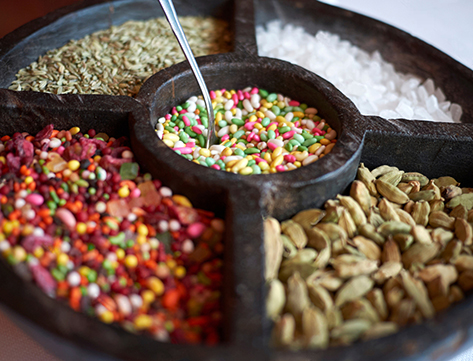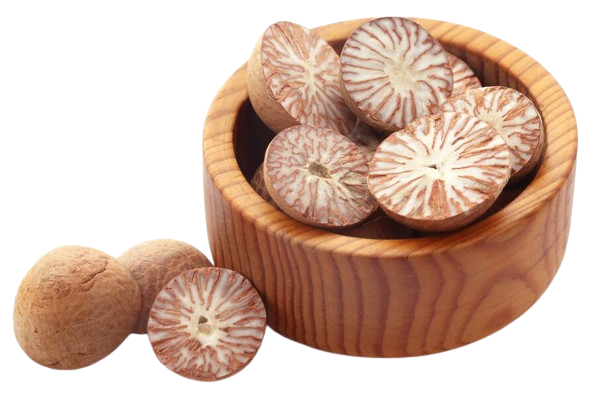So, What Is Mukhwas Called in English? Let’s Clear the Confusion!
You’ve just finished a delicious Indian meal – maybe a rich curry, fragrant biryani, or spicy chaat. Your taste buds are singing, but maybe there’s a lingering… something. Then, you spot that colorful little bowl or jar passed around, filled with tiny seeds, nuts, and maybe some sugary bits. Mukhwas! You reach in, pop a pinch in your mouth, and ahhh… instant refreshment. But later, explaining this delightful ritual to a friend who isn’t familiar, you stumble. “It’s this Indian after-dinner thing… seeds? Kinda sweet, sometimes fennel-y… what is it called in English?” Trust me, you’re not alone! That question – what is mukhwas called in English? – pops up all the time. Let’s dive in and find the answer, explore this vibrant tradition, and maybe find your new favorite mouth freshener along the way.
What Exactly Is Mukhwas Anyway?
Before we tackle the English name, let’s understand the star of the show. Mukhwas (pronounced “mookh-waas”) is a traditional Indian confectioned seed mix. Think of it as a vibrant, aromatic blend designed specifically for your mouth. The word itself comes from Hindi: “Mukh” means mouth, and “Was” means fragrance or scent. So, literally, it’s a “mouth freshener”! Its primary job? To cleanse the palate and leave your breath feeling fresh and sweet after eating, especially meals with strong flavors.
It’s deeply woven into Indian hospitality and dining culture. Offering mukhwas after a meal, or even during social gatherings, is a sign of welcome and a thoughtful way to conclude the eating experience. You’ll find it everywhere – from humble street food stalls to the fanciest restaurants, and of course, in homes across the country. It’s that little flavorful flourish at the end.
The Million-Dollar Question: Mukhwas in English
Drumroll, please… The most common and widely accepted English term for mukhwas is… “Indian Mouth Freshener”.
Yeah, it might sound a bit straightforward compared to the evocative “mukhwas,” but it gets the job done! It clearly communicates its primary function: freshening the mouth. Sometimes you might hear simpler terms like “after-meal seeds” or “digestive seeds”, but we need to be careful with that last one (more on why in a sec!). “Mouth freshener” is definitely the most accurate and widely understood translation in English.
Why “Mouth Freshener” Isn’t Quite the Whole Story
While “Indian mouth freshener” is the correct translation, it doesn’t quite capture the full essence of mukhwas. Here’s why:
- It’s Not Just Breath Mints: Unlike a standard mint, mukhwas is a complex mix. It’s an experience – a delightful little crunch, a burst of varying flavors (sweet, savory, sometimes tangy), and a beautiful visual element with its colorful ingredients.
- Cultural Ritual: Calling it just a “mouth freshener” misses the cultural significance. It’s a shared moment, a sign of a meal concluded, a gesture of hospitality. It’s as much about tradition as it is about freshness.
- “Digestive” Can Be Tricky: You’ll often hear people say mukhwas “aids digestion.” While certain key ingredients like fennel (saunf) have been traditionally used for this purpose, it’s super important we don’t make direct health claims. For us at Rasily, we focus on the cultural experience and the delightful taste and freshness it provides. Always consult a healthcare professional for digestive advice!
So, while “Indian mouth freshener” is the English name, remember it carries a whole lot more cultural flavor!
A Rainbow of Flavors: Exploring Different Types of Mukhwas
One of the joys of mukhwas is its incredible variety! It’s definitely not a one-size-fits-all situation. Different regions and families have their favorites, and the blends can range from simple to spectacularly elaborate. Here’s a peek at some popular types of mukhwas:
- Saunf-Based: The classic! Dominated by fennel seeds (saunf), often simply coated in sugar or left natural. Sweet, licorice-like, and super refreshing. A true staple.
- Colorful Supari Mixes: These often include chopped betel nut (supari) pieces alongside fennel, anise, sesame seeds, and coconut flakes. They’re frequently coated in brightly colored sugar (like pink, green, yellow) making them visually stunning. Offers a more complex flavor – sweet, nutty, with a distinctive supari bite.
- Sweet & Nutty Delights: These blends might feature sesame seeds (til), pumpkin seeds, coconut flakes, raisins, and sugar crystals. They offer a delightful sweetness and satisfying crunch.
- Minty Fresh: Some modern twists incorporate dried mint leaves or mint-flavored seeds for an extra cool kick.
- Sugar-Free Options: Catering to different preferences, you can find blends using natural flavors or sugar substitutes.
The beauty is in the mix! Each pinch can offer a slightly different combination of textures and tastes. Discovering your favorite type is part of the fun. And trust me, at Rasily, we’ve spent ages perfecting our blends to capture that authentic, high-quality taste experience. (Psst… wanna see our range? More on that below!).
More Than Just Fresh Breath: The Cultural Heart of Mukhwas
Mukhwas transcends its function as a simple mouth freshener. It’s deeply embedded in Indian social fabric:
- Hospitality 101: Offering mukhwas is a fundamental gesture of welcome and care for guests. It signals the end of a meal pleasantly.
- Social Lubricant: Sharing mukhwas during chats or after tea/coffee is incredibly common. It gives people something to nibble on while talking.
- Weddings & Celebrations: Elaborate, colorful mukhwas are often part of wedding favors (sagan or return gifts) and are served lavishly at festivals and celebrations.
- Ayurvedic Roots (Traditionally): Many key ingredients (fennel, cardamom) have roots in Ayurveda for their perceived properties. Again, we focus on the tradition and taste, not medical claims.
- Sensory Experience: From the vibrant colors to the satisfying crunch and burst of flavor, mukhwas engages multiple senses, making that post-meal moment special.
Finding Your Perfect Pinch: Authentic Mukhwas Online
So, you’re intrigued and want to experience authentic, high-quality mukhwas? Look no further than your friends at Rasily! We’re passionate about bringing you the very best traditional Indian mouth fresheners, crafted with care using premium ingredients. Whether you love the classic simplicity of saunf, the vibrant crunch of a colorful supari mix, or something uniquely delightful, we’ve got a blend to tantalize your taste buds.
Ready to explore our world of freshness? Discover our exquisite collection of traditional and innovative mukhwas right here! 👉 Browse Rasily Mukhwas Collection
We believe every meal deserves a flavorful, fresh finish. Bring home the tradition and taste of India with Rasily. Explore all our offerings on our Rasily!
Mukhwas FAQs: Your Quick Questions Answered
What is mukhwas made of?
Mukhwas is typically a mix of various seeds and nuts! Common ingredients include fennel seeds (saunf), anise seeds, sesame seeds, betel nut pieces (supari), coconut flakes, pumpkin seeds, and sometimes raisins or other dried fruits. These are often coated in sugar, natural flavors, or colored sugar syrups.
Is mukhwas sweet or spicy?
Most mukhwas leans towards being sweet or sweet-and-savory. The sugar coating is common. However, the base flavors come through – fennel is sweet/licorice-like, sesame is nutty, and supari has a distinctive, slightly astringent bite. Some blends might have a subtle warmth from ingredients like cardamom, but they aren’t typically “spicy” like chili.
Where can I buy authentic mukhwas online?
For authentic, high-quality, and delicious mukhwas delivered right to your door, check out Rasily’s Mukhwas Collection! We specialize in traditional blends and offer a variety to suit every taste. Visit our main site at Rasily.com to explore all our products.


